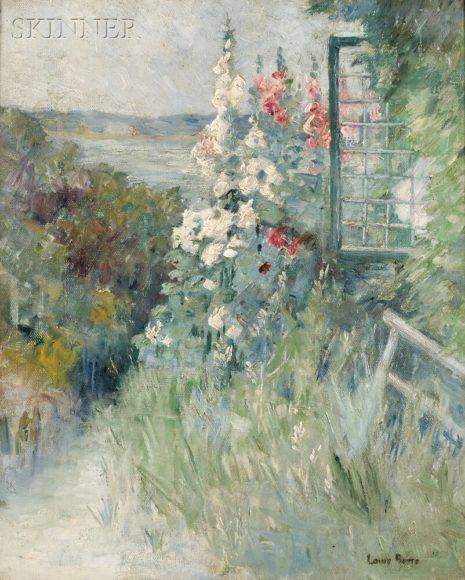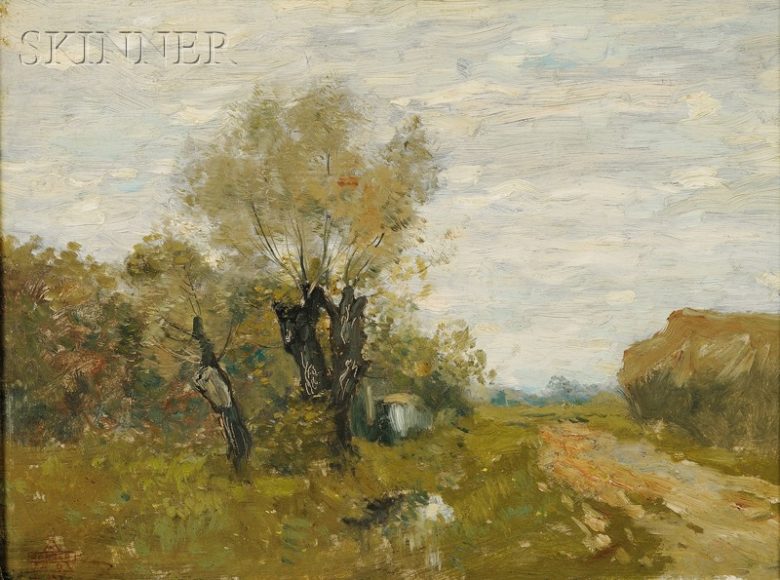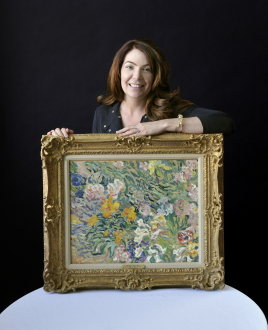Coastal Connecticut has long drawn people to its beauty and rich history. Some of the most attractive settlements dotting the sheltered shore of Long Island Sound are a historic group of villages called “the Lymes” – Lyme, Old Lyme and East Lyme.
Strategically located between the cultural centers of New York City and Boston, these quiet, rural towns became an early-20th century magnet for artists who specialized in landscape painting — much as Greenwich and in particular its Cos Cob neighborhood had become a focus for many of the American Impressionists in the late-19th century. And like the Cos Cob Art Colony, the Lyme Art Colony would become one of the most influential in the country.
The late 19th century was a period of rapid industrialization. Artists, and their patrons, were keenly aware of profound, irrevocable change. Many painters were eager to capture and immortalize the disappearing countryside. Furthermore, professional artists were mostly urban-based. Before air-conditioning, a summer escape from the hot — and also crowded and expensive — urban environment, was very appealing.
Many of the Lyme painters had studied and worked in Europe, where semi-utopian artists’ colonies like Germany’s Willingshausen and France’s Pont-Aven and Barbizon, a precursor to the French Impressionists, flourished. Old Lyme, first anointed by Henry Ward Ranger, became a favorite retreat in the United States.
The unofficial headquarters of the Lyme Art Colony, which eventually numbered more than 300 artists in its 20-year heyday, was Florence Griswold’s boardinghouse — just as the Bush-Holley House in Cos Cob, now the Bush-Holley House Museum and part of the Greenwich Historical Society, served as a summer home for many American Impressionist painters.
In the case of the entrepreneurial Florence, she converted the family home in Old Lyme to a girls’ school, then a summer hotel as the Griswold fortunes declined. Today it is the Florence Griswold Museum, displaying a fine collection of artworks by members of the Lyme colony.
Henry Ward Ranger was soon joined at the Griswold establishment by other painters like Childe Hassam, Willard Metcalf and Guy Wiggins, who were in the vanguard of the emerging new styles of Tonalism and American Impressionism respectively. Tonalists like Ranger used a limited color range and emphasized subtle gradations to suggest mood and emotion and produce misty effects. Hassam was a proponent of American Impressionism, which took a looser, more vibrant approach to the light-dappled effects and quick, colorful brushstrokes of its French cousin.
The Lyme artists applied their varied methods and philosophies to the vanishing beauties of old-time New England, creating two notable firsts in the U.S., the annual summer exhibit and the artist-financed cooperative gallery. They came to work, but they also made lifelong friendships and found discerning buyers for their art. And certainly they made time for fun.
In a 1903 letter to a friend, Hassam — who with wife Maud was also a regular at the Bush-Holley House — referred to Griswold’s boardinghouse as “just the place for high thinking and low living.” Many years later, when the old house was being restored for its new life as a museum, archeologists found a quantity of empty bottles in the crawl space beneath Hassam’s studio. They were not milk bottles.
For more, visit florencegriswoldmuseum.org. And contact Katie at kwhittle@skinnerinc.com or 212-787-1114.






